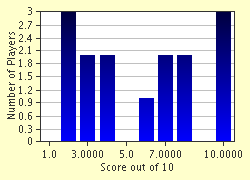Quiz Answer Key and Fun Facts
1. Upon its founding in the 5th century BC, what was Sofia's original name, which it likely received from a tribe of Celtic warriors living in the area at the time?
2. What kind of building was the Bouleutherion which was built in 4th century AD and rediscovered and excavated in the early 2000s?
3. Sofia first officially became part of Bulgaria during the reign of which Bulgarian khan, or ruler, of the First Bulgarian Empire in 809?
4. It wasn't until 1376, that Sofia was named after the city's patron saint, St. Sophia who is usually depicted alongside what?
5. Which expansive empire took control of Sofia and Bulgaria after the 1382 Siege of Sofia?
6. As the Muslim population in Sofia began to grow and the Christian population declined, which colorful mosque was built in 1528 in order for Muslims to have big beautiful buildings like the Christians had?
7. During which war, that took place in 1828-29, did Russia occupy Sofia?
8. On April 17, 1879, Sofia became the capital of Bulgaria after the National Assembly moved it there from which other Bulgarian city?
9. The St. Nedelya Church Assault, which was one of the deadliest attacks in Bulgarian history, occurred in April 1925 during the funeral of which person?
10. What kind of buildings exploded in the Sofia neighborhood of Chelopechene in 2008?
Source: Author
Joepetz
This quiz was reviewed by FunTrivia editor
gtho4 before going online.
Any errors found in FunTrivia content are routinely corrected through our feedback system.

